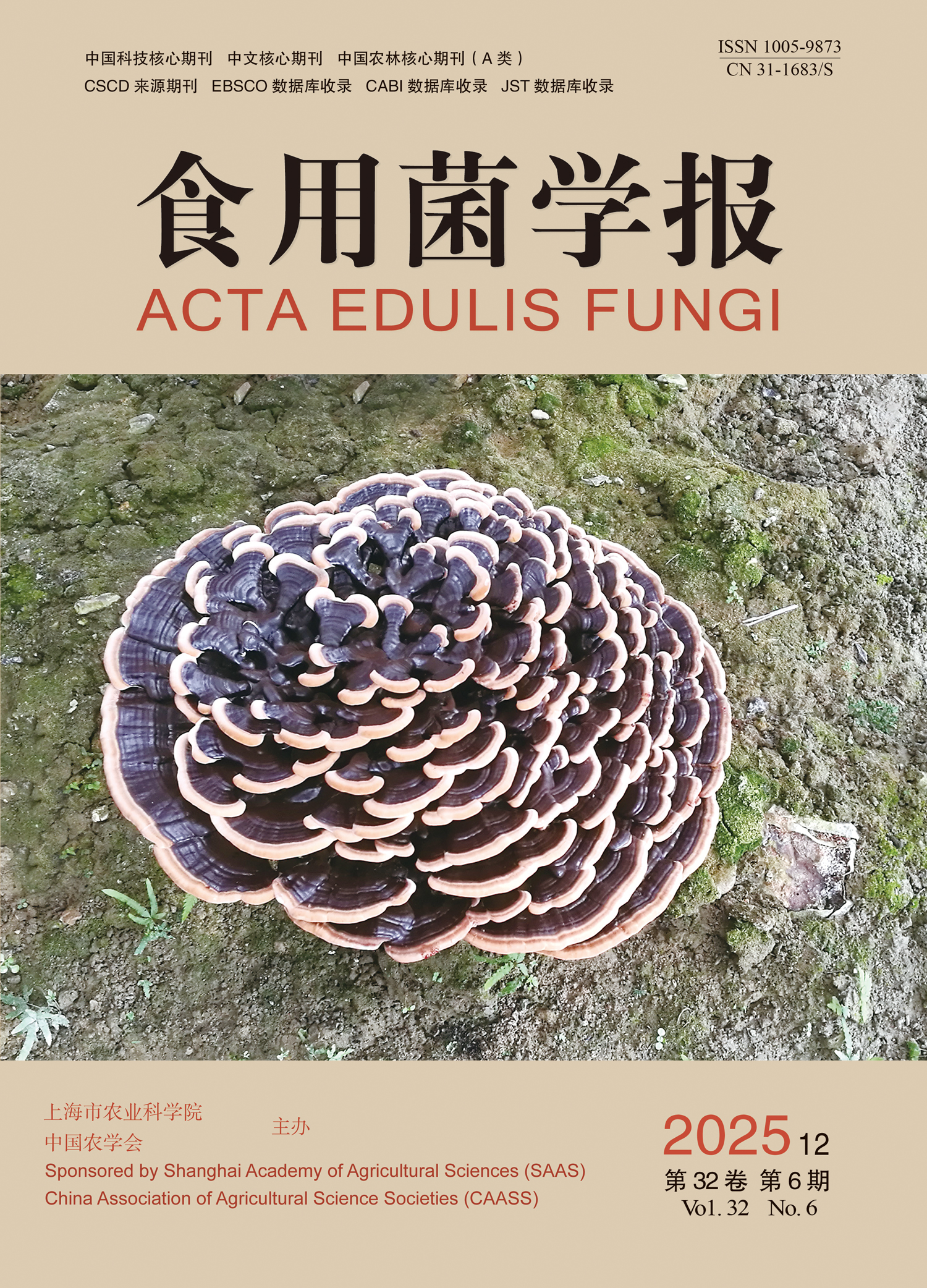SONG Xiaoxia, ZHANG Meiyan, XU Zhen, ZHANG Dan, U Yansha, JIANG Ning, TAN Qi, SONG Chunyan
To investigate the molecular mechanisms underlying morphological variations among fruiting bodies of different Lentinula edodes strains, we characterized fruiting body morphogenesis through longitudinal section observations and examined strain- and tissue-specific expression patterns of 18 functional genes using fluorescence quantitative real-time PCR (qRT-PCR). The fruiting body tissues were divided into eight regions and designatedⅠ~Ⅷ as follows: epidermal tissue at top of pileus (Ⅰ), context of pileus (Ⅱ), peripheral scale tissue of pileus (Ⅲ), context tissue at the junction between stipe and pileus (Ⅳ), gills (Ⅴ), epidermal tissue of stipe (Ⅵ), context of stipe (Ⅶ), and basal context (Ⅷ). The results showed that primordial initials with distinct internal tissue differentiation were enveloped by multiple layers of veils. As pilei and stipes expanded, gill cavities enlarged, causing progressive rupture of the veils; remnant veil tissues formed scales on pilei and cilia on stipes, with complete veil rupture culminating in maturation and subsequent spore dispersal. There were distinct differences in fruiting body morphological characteristics between strains Le2025002 and Le2025003. In Le2025002, the highest relative expression levels acrossⅠ~Ⅷ were detected for chitin synthase gene (chs), glucan synthase protein gene (gs), chs, 60S ribosomal protein L2 gene (rip), chs, gs, mannitol-1-phosphate 5-dehydrogenase gene (mpdh), and chs, respectively. In Le2025003, the dominant functional genes across Ⅰ~Ⅷ were sugar transporter 5 gene (st5), st5, st5, delta-12 fatty acid desaturase protein gene (fad2), rip, st5, st5 and st5, respectively. There were 17, 0, 11, 17, 15, 18, 12 and 10 significantly differentially expressed genes between Le2025002 and Le2025003 in Ⅰ~Ⅷ, respectively. Among them, glycoside hydrolase family 5 protein gene (gh5) and glycoside hydrolase family 6 protein gene (gh6) showed similar trends across all structural tissues in both strains. The relative expression level of st5 peaked in tissue I of both strains, whereas that of rip was the highest in tissue V of both strains. Genes gs and fad2 showed maximal expression in tissue VI of both strains.These results provided a reference for molecular-assisted detection concerning new plant variety rights in L. edodes

